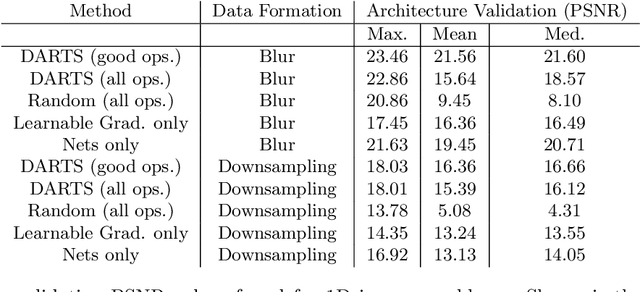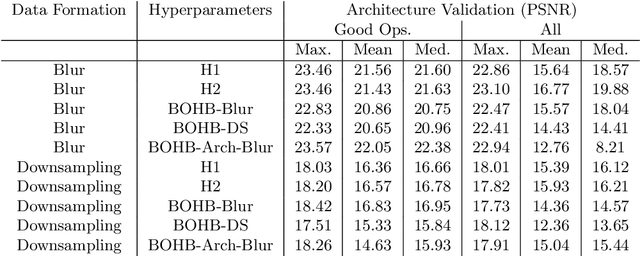DARTS for Inverse Problems: a Study on Hyperparameter Sensitivity
Paper and Code
Aug 12, 2021



Differentiable architecture search (DARTS) is a widely researched tool for neural architecture search, due to its promising results for image classification. The main benefit of DARTS is the effectiveness achieved through the weight-sharing one-shot paradigm, which allows efficient architecture search. In this work, we investigate DARTS in a systematic case study of inverse problems, which allows us to analyze these potential benefits in a controlled manner. Although we demonstrate that the success of DARTS can be extended from image classification to reconstruction, our experiments yield three fundamental difficulties in the evaluation of DARTS-based methods: First, the results show a large variance in all test cases. Second, the final performance is highly dependent on the hyperparameters of the optimizer. And third, the performance of the weight-sharing architecture used during training does not reflect the final performance of the found architecture well. Thus, we conclude the necessity to 1) report the results of any DARTS-based methods from several runs along with its underlying performance statistics, 2) show the correlation of the training and final architecture performance, and 3) carefully consider if the computational efficiency of DARTS outweighs the costs of hyperparameter optimization and multiple runs.
 Add to Chrome
Add to Chrome Add to Firefox
Add to Firefox Add to Edge
Add to Edge